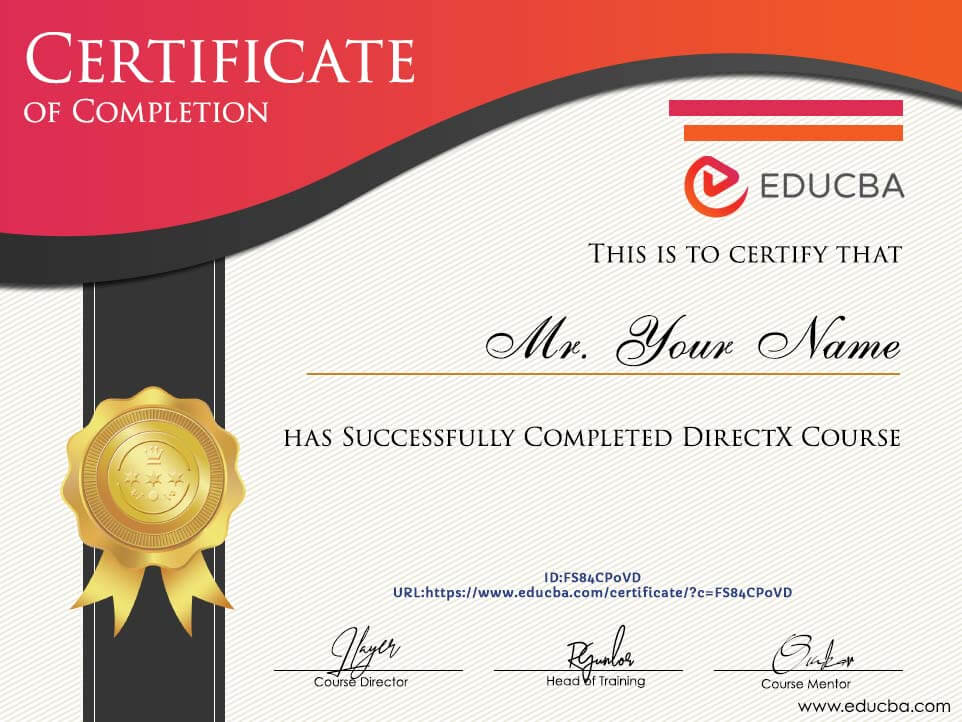Enroll now and get a FREE Exam Voucher worth $285!
Offer ends in:
What you'll get
- 17+ Hours
- 3 Courses
- Course Completion Certificates
- One year access
- Self-paced Courses
- Technical Support
- Mobile App Access
- Case Studies
Synopsis
- Courses: You get access to all 3 courses, Projects bundle. You do not need to purchase each course separately.
- Hours: 17+ Video Hours
- Core Coverage: Learn 3D computer game programming and development from scratch
- Course Validity: One year access
- Eligibility: Anyone who is serious about learning game development and wants to make a career in this Field
- Pre-Requisites: Basic knowledge about game development would be preferable
- What do you get? Certificate of Completion for each of the 3 courses, Projects
- Certification Type: Course Completion Certificates
- Verifiable Certificates? Yes, you get verifiable certificates for each course with a unique link. These link can be included in your resume/Linkedin profile to showcase your enhanced skills
- Type of Training: Video Course – Self Paced Learning
Content
-
MODULE 1: DirectX Essentials
Courses No. of Hours Certificates Details Microsoft DirectX - Beginners 5h 25m ✔ Microsoft DirectX - Intermediate 7h 03m ✔ -
MODULE 2: Advanced DirectX Techniques
Courses No. of Hours Certificates Details Microsoft DirectX - Advanced 5h 47m ✔
Description
DirectX is a Microsoft developed the application to maintain and improve the system efficiency performance of PC for windows. We can write and test their games using one of the functions, a difference of the hardware components they will run on. This is encouraged by many professional MNCs for the phase of developing the visual, user experience, and User interface improvement for the end products.
DirectX is a group of application Interfaces (APIs) developed by Microsoft. The various applications of the DirectX API provide low-level access to the hardware to run on Windows-based operating systems. Work close with hardware partners, game developers, and best application service and developers of top game engines, game creators, adopting the latest graphics rendering techniques with top performance experts in the industry. DirectX was not the first version of application Microsoft understood the need of users and developed individual applications later collaborated and made it a suite to improve the performance of the system as well as to have the best user experience at the end or while creating data.
Sample Certificate

Requirements
- Professionals, Degree Students, Graduates, and similar can appear for the course the requirements for this DirectX Training Certification are we should have basic knowledge on OS, Hardware components of the system, Programs management. Must know at least 1 programming language or application developing and bug fixing experience is an additional advantage to understand the performance difference tracking.
- Basic idea about application suites and handling multiple file-formats of the image, video, gif, and similar file which deals with gaming, visual effects, music, 3D animation, movie, 2D, and 3D graphics and more. This DirectX Certification course helps artists and animators to explore their work by conducting multiple test cases and visual standards of work.
- Individual must have an interest in tracking system performance and taking track reports after installing DirectX. Report studying, tracking, and communicating between operation teams, developing teams, case study, and more. The performance’s to have roles and responsibilities of such are challenging and good for further career growth.
- Knowledge of gaming making, gaming developing, gaming bug fixing, gaming coding, VFX for movies, and games can learn this DirectX Training Certification to have best configure system configuration to use resources effectively with 100% efficiency in multiple stages of the project. Managing the requests based on the system configuration can be set by handling multiple DirectX applications.
Target Audience
- Gamers, VFX artists can have greater configured systems and know-how exactly the system resource is managed to get better performance in creating, play games with high-end user experience enhancements freelancing can be done for such projects and also professional can compare their experience with DirectX and without DirectX which make them identify many technical observations to improve project scope with time and quality aspects.
- Photographers, Moviemakers, and people deal with clear 4K and upcoming video technologies can be performed easily without any stress we can use DirectX to get updated with technical aspects in the field to improve the quality and effects of the image or videos captured which make customers feel impressed. Managing background audio and study on music becomes a habit to set as per professional standard best practice.
- Software engineer to learn the difference between regular development processes and the DirectX development process. Understand and study on system configuration and resource management 100% effectiveness the project developments and operation for gaming, VFX, software developing companies is huge which technical need all the operations system and developing systems to work 100% effectively here where DirectX comes and solves the troubles developers can monitor and observe the technical system performance differences to enhance the developments if needed.
Enroll now and get a FREE Exam Voucher worth $285!
Offer ends in:
Training 5 or more people?
Get your team access to 5,000+ top courses, learning paths, mock tests anytime, anywhere.
Drop an email at: info@educba.com